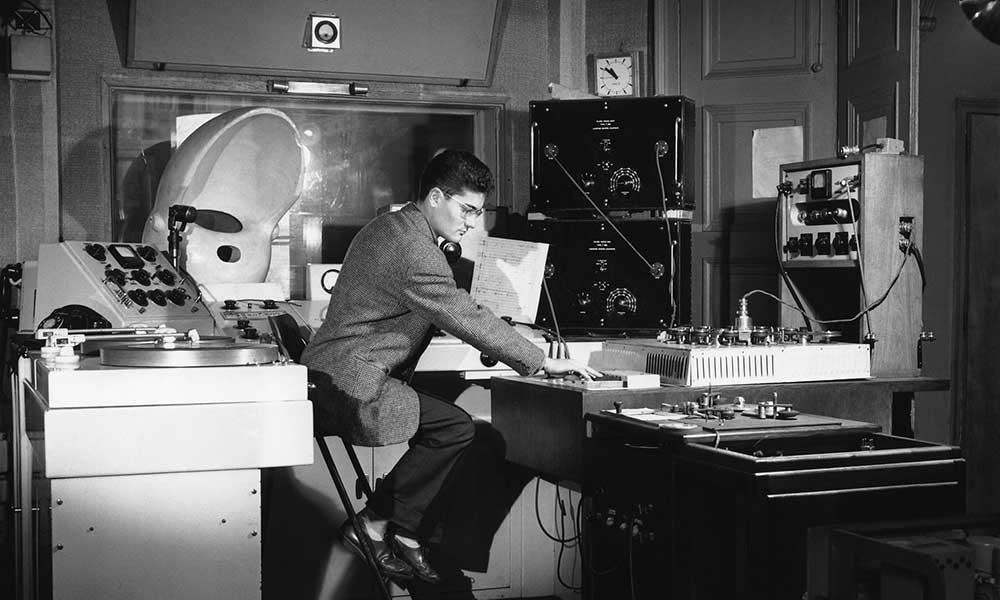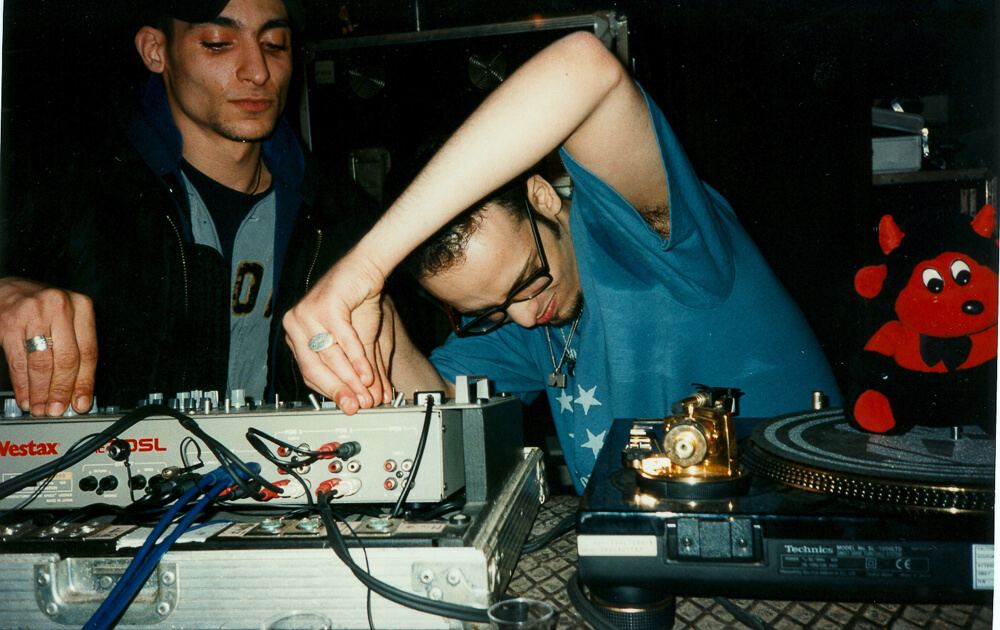Introduction to Music Production
Week 2 – The Difference Between Hearing and Listening
Pauline Oliveros
Pauline Oliveros, known as the “sound art pioneer” (Otitigbe, 2016) delves into the topic of deep listening with her TEDx Talk in 2015. During her lecture, she explains that the “Ears do not listen to sounds; the brain does.” (Isaza, 2016). With that being said, I personally agree with Oliveros as I do believe that ears do not always listen when sounds are being heard in the background. Whether we choose to focus on or analyse the noise, is purely dependent on our curiosity. It is easier for us as humans to walk around day-to-day hearing noises coming from everywhere around us. For example, a busy street, shop, garden etc. Oliveros also mentions how deep listening is seen as a ‘lifetime practice’ for some, as it is a skill to build towards depicting topics psychologically. She quoted “We know more about hearing than listening.”(Young, Unknown) which further elaborates my point that hearing is easier than listening.
Accompanying Olivero’s TEDx Talk, our teacher began to carry out ‘listening practices’ to see if we could analyse and categorise different sounds into high, mid-high, mid, mid-low, and low; in terms of critical music listening (active listening) when evaluating the attack, body and decay of an audio. Active listening falls under aural awareness which is the ‘key to sound design’ (Lukka, 2019), as it helps us to break down different noises/objects/instruments we hear when listening to an audio excerpt.
Returning back to the topic of Pauline Oliveros, she had written a book by the name of Sonic Meditations, where she teaches readers about the meditation of deep listening. One of her practices called ‘Teach Yourself to Fly’ (Page 4, Sonic Meditations) is meant to introduce the translation of voice to instrument. I understood this exercise to be a practice where you listen to your own voice instead of hearing, noticing the vibrations of sound waves from your vocal chords rather than the words spoken out of your mouth.
Bibliography
Isaza M Listener, Miguel. “What Sounds Do – Open Call for Papers.” Sonic Field, 30 Jan. 2016, https://sonicfield.org/pauline-oliveros-on-the-difference-between-hearing-and-listening/.
Jessica Otitigbevar, doNotHash: false. “Remembering the Deep Listening Pioneer: Pauline Oliveros.” Remembering the Sounds of the World’s Most Iconic Deep Listening Pioneer: Pauline Oliveros | News & Events, 2016, https://news.rpi.edu/content/2016/11/30/remembering-deep-listener-pioneer-pauline-oliveros.
Lukka, Lauri. “The Art of Active Listening.” Medium, UX Collective, 4 Jan. 2019, https://uxdesign.cc/the-art-of-active-listening-b5df58e53ab1.
Oliveros, Pauline. “Page 4.” Sonic Meditations: March – November 1971, Smith Publ. American Music, Baltimore, MD, Baltimore, 1974, pp. Page 4-Page 4.
Young, Sabrina Peña. “The Difference between Hearing and Listening: Deep Listening with Composer Pauline Oliveros.” Musical U, 13 July 2011, https://www.musical-u.com/learn/the-difference-between-hearing-and-listening-deep-listening-with-composer-pauline-oliveros/.
Week 3 – Pierre Henry and the creation of Musique Conrète
“I try to work without any specific machinery and when I find a machine … I find a machine interesting when I have twisted it without knowing.”
– Pierre Henry
Passing away at the solemn age of 89 years old, French composer Pierre Henry was known for his work named ‘The Art Of Sounds’ and being the main inspiration to the opening theme of hit animation series Futurama. Henry was born in 1927 on December 9th in Paris, where he had entered the Paris Conservatory at the age of 10 where he then studied with great intent with teachers such as the renowned Nadia Boulanger (who had also taught Quincy Jones and Aaron Copland). At 15 years old, he began experimenting which the production of sounds made by random objects found around and at his house. There, he had formed his fascination with the manipulation of music now known as ‘noise music’. Based of his influence in electronic music, Henry was not fond of traditional musical instruments, where he would prefer to experiment with non-instrumental sounds.

In 1949 he had started working alongside Pierre Schaeffer at the Club d’Essai, in which they created their work with several musicians that collaborated in the creation of ‘Musique Concrete’ which could be described as electronic and acoustic sources forming collages of “prerecorded and manipulated sounds”. That then influenced the music industry in terms of the manipulation of sounds using electronic production as well as the usual recording and editing of tracks.
Henry’s influence can be seen in modern tv shows such as Futurama, where we see such detail in the theme. His reputation seems to be that pop fans either knew very little or nothing of the man. In the song ‘Psyche Rock‘, it was originally used in a ballet, however due to how unique the sound was, it then became a mold in which other DJs and producers are inspired by Henry. From reading Henry’s biography and learning about his dislike towards traditional musical instruments, I was surprised to find that this song had a lot of melody and flow, unlike some of his other works like ‘Classique: Bidule et un’.
Citations
d’Ybiade, Ariel. “Pierre Henry _ Psyché Rock.” YouTube, YouTube, 13 Jan. 2015, https://www.youtube.com/watch?v=vC1cgcOEErQ.
The Editors of Encyclopaedia Britannica. “Musique Concrète.” Encyclopædia Britannica, Encyclopædia Britannica, Inc., https://www.britannica.com/art/musique-concrete.
Editors of Encylopaedia. “Nadia Boulanger.” Encyclopædia Britannica, Encyclopædia Britannica, Inc., https://www.britannica.com/biography/Nadia-Boulanger.
Mallet, Franck. “Pierre Henry, the Art of Sounds.” The World’s Leading Classical Music Channel, https://www.medici.tv/en/documentaries/pierre-henry-the-art-of-sounds.
MovieTrailerGrave, . “Futurama (1999-2013) – Intro.” YouTube, YouTube, 30 Dec. 2016, https://www.youtube.com/watch?v=6F1QNfmiqHc.
N/A. “Noise Music.” Wikipedia, Wikimedia Foundation, 28 Nov. 2022, https://en.wikipedia.org/wiki/Noise_music#:~:text=Noise%20music%20is%20a%20genre,musical%20and%20non%2Dmusical%20sound.
N/A. “Studio D’essai.” Wikipedia, Wikimedia Foundation, 25 June 2021, https://en.wikipedia.org/wiki/Studio_d%27Essai.
Palombini, Carlos. “Musique Concrète Revisited.” Pierre Schaeffer and Pierre Henry, 1999, http://www.rem.ufpr.br/_REM/REMv4/vol4/arti-palombini.htm.
Rathbone, Oregano. “Pierre Henry: The Avant-Garde Composer Who Shaped Rock’s Future.” UDiscover Music, 9 Dec. 2021, https://www.udiscovermusic.com/stories/pierre-henry-musique-concrete/.
tmaxx2, . “Psyche Rock (Full Version).” YouTube, YouTube, 10 July 2009, https://www.youtube.com/watch?v=qssa6ec7faQ.
Topic, Pierre Henry. “Classique: Bidule Et Un.” YouTube, YouTube, 5 Dec. 2014, https://www.youtube.com/watch?v=UGoSQ5rnBFw.
Tsioulcas, Anastasia. “Remembering Pierre Henry, a Composer Who Made the Everyday Extraordinary.” NPR, NPR, 8 July 2017, https://www.npr.org/sections/therecord/2017/07/08/536055793/remembering-pierre-henry-a-composer-who-made-the-everyday-extraordinary.
Week 4 – Delia Derbyshire
Delia (Ann) Derbyshire born on the 5th of May 1937, was a celebrated musician and composer of electronic music. Most notable for her arrangement of the British television series, Doctor Who. Derbyshire had grown up during World War II, when she was forced to move from her hometown of Coventry to Preston, Lancashire for safety reasons. From the young. Age of four, Derbyshire had been able to teach other young children her age to read and write. Aside from this, she has always known that she was equipped for the world of radio and electronic music. In school, Derbyshire would find random everyday objects and demonstrate the potential of the sounds created to make music which would then “haunt her later work”.

As mentioned before, Derbyshire had grown up during the war, uncovering various sounds and echoes from the air raid sirens as well as the busy street filled with factory workers were used in her music as she moved herself up in the music industry. For university, she was given the offer to study at both Oxford and Cambridge university, even winning a scholarship at Girton College, Cambridge to study mathematics. After a year at Cambridge University, Derbyshire switched from mathematics to music, graduating in 1959 with a BA in mathematics and music, specialising in medieval and modern music history.
At the beginning of her career, Derbyshire was shunned away by men in the music industry, specifically Decca, who had told her that women were not employed in their studios. However, in 1960, she joined BBC as a trainee assistant studio manager and then transferred to BBC Radiophonic Workshop from 1962 to 1973. The Doctor Who theme which is now known as the ‘Delian’ piece, was named after Derbyshire after her arrangement of the British television classic. What I find interesting is how Ron Grainer, the original score composer for the Doctor Who franchise, could not credit her as co-composer as the BBC wanted members of the workshop to stay anonymous. It was not until the Doctor Who’s 50th anniversary special, The Day of the Doctor, where she was finally credited for her work, after she had passed away due to alcoholism and renal failure at age 64.
Citations
N/A, N/A. Delia Derbyshire (Delia-Derbyshire.org), n.d., https://www.delia-derbyshire.org/.
Butler, David. “Delia Derbyshire.” BBC 100, BBC, n.d., https://www.bbc.com/historyofthebbc/100-voices/pioneering-women/women-of-the-workshop/delia-derbyshire.
Week 5 – Pink Floyd
Dark Side of the Moon
In the early sixties, students with academic backgrounds in Cambridge University formed a band now known as Pink Floyd. Roger ‘Syd’ Barrett, Roger Waters and David Gilmour had earned their spot in the rock and roll hall of fame with their album sales hitting more than 250 million dollars. Dark Side of the Moon is an album released in 1973 and won nominations such as the Brit Award for Mastercard British Album of the Year and both NME Award for World Album and British Album. It was the eighth official album released by the group.

I personally think that the album presents a lot of unique aspects which have influenced a new generation of music. Each song seems like it was written for one another and has a smooth transition, although having a different vibe, makes it feel like stages of a trip. With features such as echo delay and creating trance-like soundscapes, the band easily achieved success with the release of the album.
The first song ‘Speak to Me’ introduces the album with an out of body experience, kicking off with a heartbeat and several voices panning around your head, slowly drifting into a state of insanity. With the 1 minute introductory song, we smoothly transition into the second song ‘Breathe (In the Air)’ a chorused guitar solo which pulls the audience in for a calming experience. The chords were seen to have been inspired by Miles Davis explained by Rick Wright, keyboardist of the group (Levitin, 2012). During my research I had found that the band had equipped the EMS Sythi AKS synthesizer for this album to make a specific psychedelic blur. The group have also taken inspiration and borrowing techniques from Pierre Schaeffer and Pierre Henry’s Music Concrète, where bands such as the Beatles have also done so with albums ‘Sgt. Pepper’ and ‘White Album’ (Levitin, 2012).
Citations
Admin. “Electronic Music Studios (EMS) Synthi A.” Home Page, Vintagesynth, 12 Aug. 2022, www.vintagesynth.com/misc/synthi.php.
Gorshin, Mawr. “Analysis of ‘The Dark Side of the Moon’.” Infinite Ocean, 9 Dec. 2018, mawrgorshin.com/2018/12/08/analysis-of-the-dark-side-of-the-moon/.
Music-and-Art-45. “The Meaning of Pink Floyd’s ‘Dark Side of the Moon.’” Spinditty, Spinditty, 21 Feb. 2013, spinditty.com/genres/The-Meaning-of-Pink-Floyds-Dark-Side-of-the-Moon#:~:text=Dark%20Side%20of%20the%20Moon%20is%20a%20concept%20album%20that,a%20life%20that%20goes%20unfulfilled.
N/A. “Pink Floyd: The Official Site.” Pink Floyd | The Official Site, www.pinkfloyd.com/history/biography.php.
Essay Proposal
Let It Happen – Tame Impala
Currents, an album by Australian artist Kevin Parker, widely known as Tame impala, is an album about change – the “currents” refers to the transition that carries us all through different stages of life. Every detail of the album applies to this theory, for example; the music in the album shows a noticeable style shift in terms of musical elements from the “Old” Tame Impala, where he used guitar and more synths. The lyrics (song titles like “Yes I’m Changing”) and even the cover art (a psychedelic representation of “vortex shedding”). Much of the album’s lyrics revolve around romantic change, and it’s often referred to as a breakup album. While this is evident, the “breakup” label minimizes the universality of Currents’ themes.
“Let It Happen” introduces both the lyrical themes of change and the sonic, electronic-based change of the album itself. “Let It Happen” is ominous, chaotic and beautiful all at the same time. The track contains some of Parker’s most universal lyrics. “It’s always around me, all this noise” could apply to many things: overwhelming stress, anxiety, foreboding change. The “noise” flutters constantly in Kevin’s mind in the visual form of a “whirlwind” that will consume everything that is not metaphorically tethered to the ground. The “whirlwind” is a climactic moment of change, perhaps a long-awaited one. But Parker’s response is not to stamp out the noise, run from the whirlwind. He instead repeats a simple phrase: “let it happen.” He will allow the change to consume him and go through it confidently. Lyrically, “Let It Happen” grandly introduces the theme of the album and leads into the first act of Currents, High Tide. I wanted to write my essay on this topic as I find Tame Impala’s music deeply interesting and inspires me to create music of my own.
Citations
Echard, William. “Delineating Psychedelia: Topic Theory and Popular Music Cultures.” Psychedelic Popular Music: A History through Musical Topic Theory, by William Echard, Indiana University Press, Bloomington, 2017, pp. 5–9.
Weiner, Jonah. “The Cosmic Healing of Tame Impala.” Rolling Stone, Rolling Stone, 11 June 2019, www.rollingstone.com/music/music-features/tame-impala-band-kevin-parker-836938/.
Week 6 – Slave to the Rhythm
Grace Jones and Trevor Horn
Grace Jones, best known as a model for many worldwide luxurious fashion brands, created an album in 1985 known as ‘Slave to the Rhythm’ which mirrors her personality and authenticity of her boldness as a character. I assume that Jones had wanted to show the industry as well as the world that she was not just a pretty face to model, but that she has musical capabilities too. The song mainly fits into the genre of 80’s pop which follows along the likes of Whitney Houston etc. She worked with world renowned producer Trevor Horn, who had previously worked with artists such as Malcolm Mclaren and Frankie Goes To Hollywood. He had over a decade within the music industry to help him build connections and find ‘stars’ to work with.
The song begins with an MC who introduces the audience to the artist, she who is ‘Grace Jones’, as well as the title of the song, making it known of her importance. Horn had done this to epitomize Jones and put her in the centre. Grace Jones does not shy away from boldness and eccentricity, rather she embraces it, which made her popular in that generation of influencers/celebrities. Now a days we have singers such as Lady Gaga who are praised for the same things; boldness and uniqueness.

However, the song had taken a whopping 385,000 dollars to produce, with Grace entering the studio under Horn’s supervision. In the song ‘The Crossing’ we can see that Horn wanted to experiment with a different vibe as opposed to Jones’ upbeat and active vibe. Here it shows a solemn and tranquil energy almost heavenly and pure, which is very unlike Jones’ regular tracks. Again, here in ‘Operattack’, we see artists using Pierre Henry and Pierre Schaeffer’s techniques on Musique Concrete, where Horn has used vocal slicing and echo machines to experiment with the spatial audio and how it would appear on tracks (Classic Album Sundays Benefactors, Unknown).
Citations
Carlos, Caitlin Vaughn, et al. “Rewriting to Perfection: ‘Slave to the Rhythm.’” Produce Like A Pro, 9 Mar. 2022, producelikeapro.com/blog/slave-to-the-rhythm-grace-jones/.
Griffiths, Daniel. “The Story of Grace Jones’ Slave to the Rhythm: Tempo Changes, Stacked Roland Synth Patches and Trevor Horn.” MusicRadar, MusicRadar, 20 May 2022, www.musicradar.com/news/slave-to-the-rhythm-song-stories.
Kimber, Mark. “The Story of Grace Jones ‘Slave to the Rhythm’.” Classic Album Sundays, 3 Nov. 2021, classicalbumsundays.com/the-story-of-grace-jones-slave-to-the-rhythm/.
Week 7 – Techno Punk
Richie Hawtin, the Plastikman, and his song ‘Spastik’.
British born Canadian producer, DJ and Label Manager Richie Hawtin (Richard Michael Hawtin) has developed his own style of producing, making influences in the music industry. He is also known by the alias ‘Plastikman’ in most of his work. Hawtin was mainly inspired by Detroit techno which is known to be quite ‘hard’ and noisy to a more minimal deep techno sound. In the rise of the 90’s emo-techno underground music scene, German techno has been taking influences from Detroit, Chicago and Frankfurt for their evolvement in techno. During the early 90s illegal underground techno parties had thrived off the fall of the Berlin Wall where the walls from the abandoned landmark. This soon proceeded to the now known German nightlife where youths come to rave and party.

In his song ‘Spastik’, it opens with repetitive percussion, drawing in the audience, helping them form the energy needed to rave. I believe that in his work, he plays with the energy of the audience, often experimenting with different dynamics and volumes. The beat never seems to change and only seems to be hidden in some moments of the track. Around the 2 minute and a half mark, we start to hear other synths come in. Transitioning into the third minute, we start to hear a breakdown in the song. This song in particular is seen as a German staple in nightclubs. Hawtin frequently used his “heavily processed james on his Roland 707, 808 and 909 drum machines,” (Aykan Esen for Attack, 2021).
Citations
Discogs. “Richie Hawtin.” Discogs, www.discogs.com/artist/835-Richie-Hawtin.
Esen, Aykan. “Spastik-Style Percussive Techno.” Attack Magazine, 23 Sept. 2022, www.attackmagazine.com/technique/beat-dissected/spastik-style-percussive-techno/.
“German Electronic Music.” Wikipedia, Wikimedia Foundation, 1 Oct. 2022, en.wikipedia.org/wiki/German_electronic_music.
ovokx. “Plastikman – Spastik.” YouTube, YouTube, 4 Dec. 2007, www.youtube.com/watch?v=Nsct-e-HVE0.
Week 8 – Muslimgauze
Mullah Said is a track by Muslimgauze released in 1998. The song is 12 minutes long and plays the prayers in Arabic, usually heard at a mosque, due to its echo. Muslimgauze is typically abandoning Muslim traditions where in stricter communities, the only music that should be heard is Muslim prayers. So, in this aspect, Muslimgauze is introducing the course of melody and rhythm using his culture’s way of interpreting music. To me, it is the perfect combination of the urban middle east and the modern tribal sounds. This, accompanied by the intense echoes and powerful manipulated vocal samples creating a conflict caused by the build of drums slowly growing into a crescendo.

Muslimgauze, whose real name is Bryn Jones was a project Jones had made in the early 80’s. His music was often influenced by problems and conflicts seen within the Muslim community, especially as an outsider who made a persona based off word of mouth. He was pro-Palestinian and was fascinated by the Muslim culture, even an obsession with politics of the Middle east. Jones had a very short-lived career as he had passed away from a rare fungal infection in 1991. When he passed away, Jones had 96 titles in his discography.
As a Muslim myself, I find it very interesting how he integrates the Muslim culture with tribal music as well, as I am very unfamiliar with the combination. Along with that, he uses voice slicing which makes the vocal audio around fit more with the beat and rhythm of the track.
Citations
Clayton, Jace. “Muslin Gaze.” Bidoun, 3 Dec. 2009, www.bidoun.org/articles/muslin-gaze.
Leath, Stuart. “An Introduction to… Muslimgauze.” The Vinyl Factory, 25 July 2017, thevinylfactory.com/features/an-introduction-to-muslimgauze/.
“Muslimgauze – Mullah Said (1998, CD) – Discogs.” Mullah Said , www.discogs.com/release/197827-Muslimgauze-Mullah-Said.
